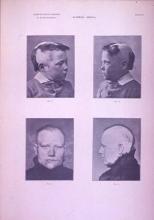There’s power in numbers, and why should patient advocacy be any different?
Last week, at a meeting in Philadelphia on the collection and use of clinical specimens for genetic studies, alopecia areata researcher Dr. Angela Christiano couldn’t stop praising the National Alopecia Areata Foundation, both for its financial assistance in funding her research over more than a decade, and for the group's more intrinsic aid in establishing, promoting, and populating the National Alopecia Areata Registry that provided the genetic specimens Dr. Christiano and her associates used to identify eight genes linked to the disease, study results they reported last year.
In her talk, Dr. Christiano gave some reasons why alopecia areata should have such a dynamic advocacy group. Alopecia areata, an autoimmune disorder that causes either partial or complete hair loss in otherwise healthy, young people, affects more than 5 million Americans. In addition, until recently little was know about its cause, and no evidence-based nor reliably effective treatment exists.
The genetic links that Dr. Christiano and her colleagues identified finally provide clues to what causes alopecia areata and how it might be treated. They also plan to further explore genetic links in an expanded study. Last year’s report used genetic specimens from 1,054 patients, but now the registry includes about 7,400 patients, and the researchers’ goal is to raise the total above 10,000.
The discussion at last week’s meeting made clear that patient advocacy groups can play a key role in helping researchers acquire large numbers of clinical specimens for genetic studies from patients with a variety of diseases. The Internet and social media have made patients much more informed about their conditions and have tied them into better organized networks. Alopecia areata is a disease where the payoffs from this have begun to accrue.
---Mitchel Zoler (on Twitter @mitchelzoler)


